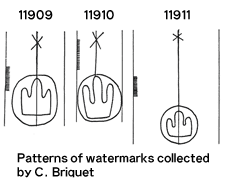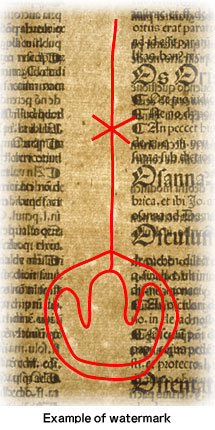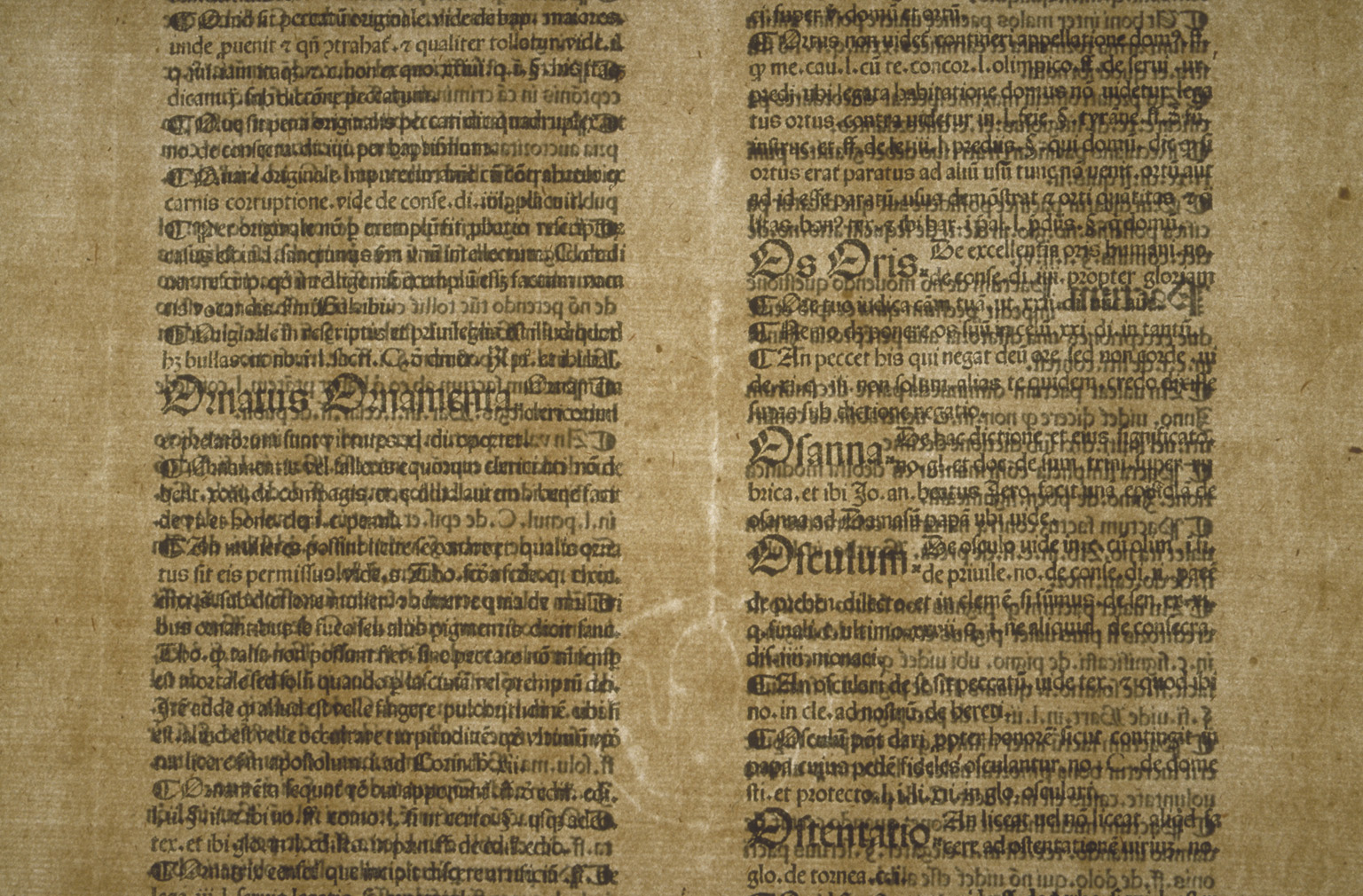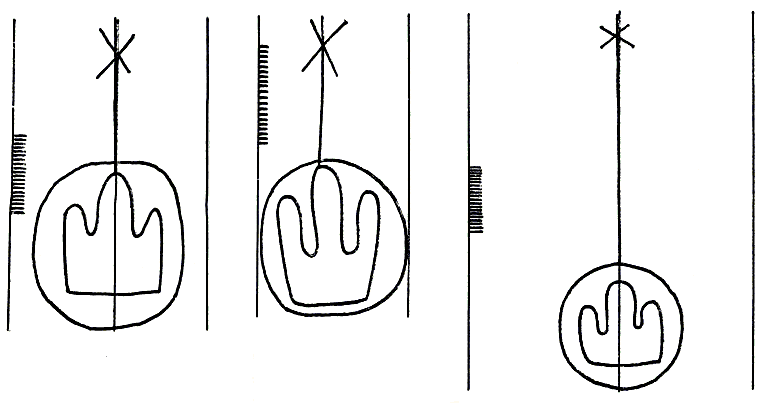Column
The World of Watermarks
It was already known in the 18th century that watermarks, inserted in paper, can be a useful tool to identify the place and year in which the paper was produced. In 1804 G. Fischer published the list of watermarks, Beschreibung einiger typographischen Seltenheiten, 6.Lief., in which he stated that the oldest watermark was on paper produced in 1301. J.G.I. Breitkopf (1719-94), G. Sardini and other researchers also investigated watermarks in incunabula. Their efforts, however, did not lead to any extensive research.
In Switzerland, C. Briquet (1839-1918), a pioneer in watermark research, dedicated his life to gathering information on watermarks. Les filigranes, published in Geneva, Paris and Leipzig in 1907, is a monumental work comprising a collection of 16,000 watermarks found in paper produced in 1600 or earlier. The oldest watermark that Briquet discovered is one printed on paper produced in 1282. This book classifies watermarks by forms, such as "aigle (eagle)", "boeuf (bull)," etc., and records the size of the paper with watermarks and the place where the paper was produced, as well as where and when the paper was used. His research indicates that 90% of the paper with the same watermark had been used within a range of 15 years and 50% within a range of five years. This means that the printing years of incunabula, even if not indicated, can be roughly estimated by examining the watermarks.
Briquet's book, however, does not cover every single watermark. After Briquet, other researchers continued research on watermarks. The Paper Publications Society established in the Netherlands in 1948 published a series of books entitled Monumenta chartae papyraceae historiam illustrantia. In Germany, G. Piccard began to publish a collection of watermarks from 1961. It used to be regarded as a difficult job to gather accurate data on the shapes and sizes of watermarks, but the development of scientific methods such as β-ray irradiation has enabled researchers to obtain data on watermarks relatively easily. Thus the International Association of Paper Historians has proposed standards for describing watermarks.
To utilize the data gathered so far, the development of a database of watermarks is under way. The National Library of the Netherlands (Koninklijke Bibliotheek) provides access for the public via the Internet to a database of 4,000 watermarks found in 275 titles of incunabula printed in the Netherlands.
URL for the web site:
Other web sites listed below also allow public access to their databases on watermarks.
URLs for the web sites:
The photo on the left-hand side shows the watermark found in one leaf of Petrus de Monte's Repertorium utriusque juris, which was printed in 1480 by Johannes Herbert of Seligenstadt in Padua. In Briquet's Les filigranes, this watermark is classified into the category of "monts (mountains)." Among the watermarks collected and numbered by Briquet, 11909 (Udine, 1423), 11910 (Vicence, 1433) and 11911 (Gurck, 1448) resemble this watermark (see the images shown below). According to Supplément au Catalogue des livres de la Bibliothèque de M. C. de la Serna Santander, which was published in Brussel in 1803, this watermark was also found in one of the incunabula printed by Nicolaus Jenson in Venice from 1472 to 1477.





